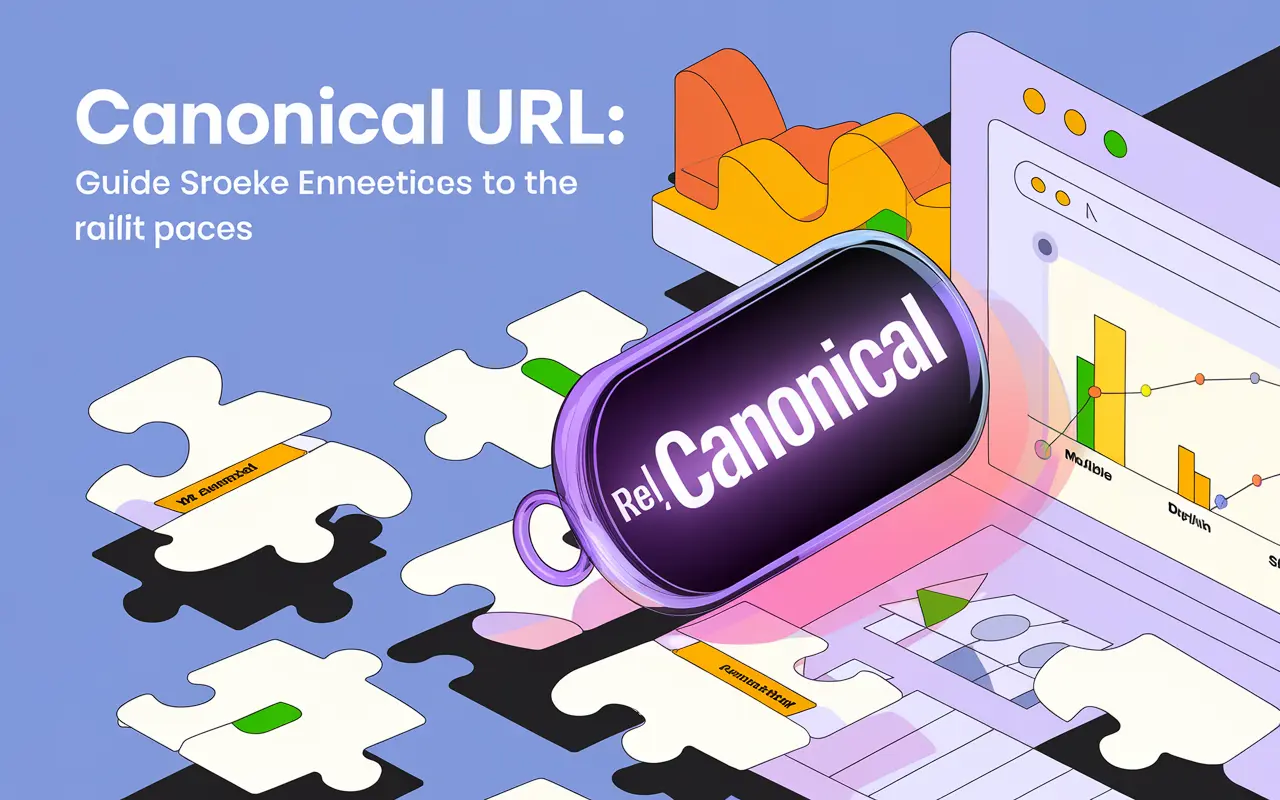What is Canonical URL?
Canonical URL is a foundational concept in SEO that ensures your website’s content is not penalized for duplication. Whether you run an eCommerce website or a blog, there are instances where the exact content is accessible through multiple URLs. Without proper guidance, search engines may treat these as duplicates, affecting your site’s rankings. This is where the Canonical URL tag comes in—it tells search engines which version of the URL represents the ‘preferred’ or original content.
In the broader SEO ecosystem, Canonical URLs assist in consolidating page authority, improving crawl efficiency, and preventing indexing of undesired pages. When applied correctly, they contribute significantly to higher search rankings and a more streamlined site structure.
Definition
A Canonical URL is the URL of the page that you want search engines to consider as the master copy among a group of duplicate or similar pages. By placing a rel="canonical" tag in the <head> section of your HTML, you signal to search engines that despite having multiple accessible versions of the same page, only one should be treated as authoritative.
For example, if both https://yourdomain.com/shirt and https://yourdomain.com/red-shirt show the exact same content, you can set one of them as canonical to avoid duplication penalties.
Key Takeaway
Canonical URLs centralize link equity and prevent duplicate content issues, ensuring your SEO efforts are not diluted across identical or similar pages.
Importance for SEO
Canonical URLs are critical for successful SEO strategies. They help you avoid duplicate content issues that could otherwise confuse search engines and weaken your site’s visibility. By implementing canonical tags, you ensure your website’s authority isn’t split between multiple versions of the same page.
For businesses aiming to improve their site’s ranking and reduce SEO waste, Canonical URL management is non-negotiable. It lowers the risk of internal competition for similar pages, boosts keyword consistency, and enhances overall crawl budget optimization. Learn more about SEO here.
Best Practices
- Always Use Absolute URLs: Your canonical tag should include the full URL including protocol (e.g.,
https://example.com/page). - Make Canonical Tags Self-Referencing: Each primary URL should have a canonical tag that points to itself to reinforce consistency.
- Avoid Setting Multiple Canonical Tags: Only one canonical tag should be declared per page to avoid confusion.
- Cross-Domain Canonicalization: Use this when identical content is hosted on multiple domains, signaling the original source to search engines.
- Implement on Pagination: Use canonical tags alongside pagination rel tags (rel=“prev” and rel=“next”) to group groups of articles/products for improved indexing.
- Combine with 301 Redirects: When possible, use both canonical tags and 301 redirects to reinforce authority delegation for moved content.
How Canonical URL Works
When a search engine bot crawls your site, it checks the HTML of each page. If it discovers multiple URLs serving the same or similar content, it will select a ‘canonical’ page to index. However, if you include a rel="canonical" tag in your HTML <head>, you’re actively guiding the search engine on which version to prioritize.
This eliminates the risk of unwanted versions being indexed or ranked. So instead of search engines trying to guess the ‘correct’ page, you’re handing it the answer directly.
| Scenario | Canonical URL Solution |
|---|---|
| Multiple URLs with identical content | Use rel="canonical" to point all versions to the preferred page |
| eCommerce product filters creating new URLs | Set canonical to main product page without filters |
| Same content across subdomains | Cross-domain canonical to primary domain page |
Case Study: Fixing Duplicate Content with Canonical URLs
Problem: eCommerce Site with Duplicate URLs
An online retailer noticed their category pages were being crawled and ranked under multiple URLs due to filters like color and size variations. This caused diluted link equity and poor ranking performance.
Solution: Implemented Canonical Tags Across Filtered Pages
The SEO team implemented canonical tags pointing all filtered variations to the main category page. They also blocked those variations using robots.txt to optimize crawl efficiency.
Results: 32% Increase in Organic Traffic
Within 2 months, the site experienced a 32% increase in organic category page traffic and a 19% improvement in keyword rankings across high-converting product categories.
Common Mistakes to Avoid
- Incorrect Canonical URL: Pointing to a page that returns an error or doesn’t exist.
- Using Relative URLs: Always use the absolute full canonical URL to avoid misinterpretation.
- Multiple Canonical Tags: Having more than one canonical tag in the HTML causes conflict.
- Canonical Pointing to Different Page Content: Should only point to pages with nearly identical content.
- Not Updating Canonical Tags on Migrated Pages: Update canonical URLs when pages move or are redesigned.
Related Terms
- Technical SEO: Focuses on improving server and site configurations to help search engines crawl and index your site more efficiently.
- URL Structure: Refers to how your URLs are formatted which affects SEO and user readability.
- Meta Tags: Snippets of text that describe a page’s content and help search engines understand what the page is about.
Conclusion
In an age where content duplication can quickly erode a site’s SEO effectiveness, Canonical URLs provide a powerful method for maintaining clarity for both users and search engines. By controlling which version of a URL search engines should index, you consolidate authority, eliminate duplication penalties, and refine your site’s crawl efficiency.
Whether you’re managing an eCommerce business, a news website, or a service portal, implementing canonical tags should be an essential part of your SEO playbook. Don’t miss out on one of the most overlooked yet crucial aspects of modern SEO!
Ready to boost your SEO strategy? Explore our SEO services now.






